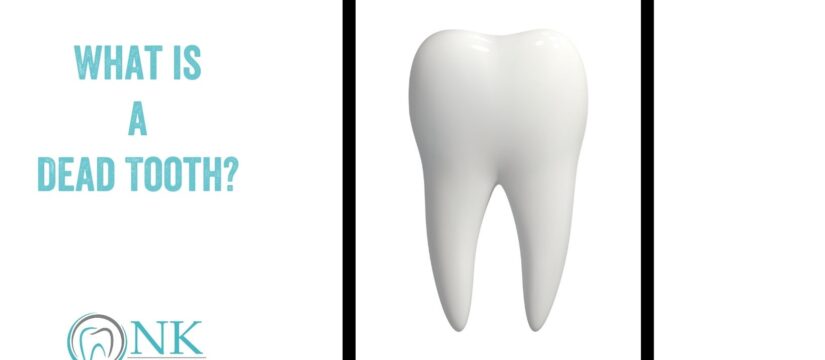
The idea of having a dead tooth in your mouth may seem rather macabre. But instead of being the premise for a horror movie, it’s a relatively common condition affecting more than 15 million people every year. If you nevertheless find the description somewhat unsettling, it’s also known as a non-vital tooth.
Although we usually don’t think of teeth as being “alive,” the pulp of each tooth contains nerve tissue and blood vessels. The pulp extends from the crowns of the teeth to the tips of their roots. Like all living tissue, the pulp can be damaged, thereby disrupting the blood flow to the tooth. Depending upon the cause, blood flow may be able to be restored if the damage is treated in time. Should this not be possible, the tooth may be treated by a root canal procedure, or in the case of extreme damage, require extraction.
Reasons Why a Tooth Can Die
There are two main reasons a tooth can die: trauma or decay.
Trauma — Injuries occurring in contact sports, physical fitness/sports activities involving equipment used close to the lower face, falls, vehicular accidents and acts of physical assault are typical causes of dental trauma.
For this reason, wearing a mouthguard is a proactive way to protect your mouth while playing contact sports. If you or your child are on an organized team, its use is most likely required. Our blog post — “Six Reasons Why Adults and Youngsters Need to Wear a Mouthguard for Contact Sports” — covers this topic in detail.
As Colgate points out, an injured tooth may be cracked, allowing bacteria to access the pulp, which can become infected and die. In cases of injury, calling your dentist for an emergency appointment (assuming you have no additional injury requiring immediate medical attention, or after you’ve received emergency treatment) could help reestablish blood flow in time to save the tooth. Your dentist may also prescribe an antibiotic to prevent infection. NK Family Dental can accommodate same-day emergency appointments, as well as provide support for after-hours emergencies.
Decay — Poor oral hygiene sets up the conditions for tooth decay, which — if left untreated — will work its way into the pulp of the tooth. This leads to the pulp becoming infected, thus cutting off blood to the pulp and causing it to die. For those who are consistent in their oral care regimen and visit their dentist for regular six-month examinations and cleanings, this is typically not a factor. However, people who have dentophobia — a true phobia in which the idea or anticipation of going to the dentist leads to a fearful response — will avoid seeing a dentist even when their neglect of oral health results in advanced tooth decay, periodontal disease or a potentially life-threatening infection. Ironically, such behavior results in more extensive treatment eventually being necessary — that is, the worst-case-scenario the patient so greatly feared becoming reality because the course of decay or disease has progressed too far.
The American Psychiatric Association (APA) recognizes dentophobia as a specific phobic disorder in its Diagnostic and Statistical Manual of Mental Disorders (DSM). Our blog post — “Dealing With Dental Anxiety” — describes this condition in greater detail.
Signs of a Dead Tooth
Although pain can be an indication of a non-vital tooth, some people experience no pain, and are unaware that their tooth has died. Others may experience mild or intense pain, sensitivity to hot or cold foods, or while chewing with the tooth.
Other signs include the following:
Discoloration — One of the most common indicators of a dead tooth is a change in color from the surrounding teeth. As the blood supply is disrupted and the tooth begins to die, it may become gray, yellow, brown or even black, if left untreated for too long.
Bad breath — Persistent bad breath – also called halitosis – has several causes. A dead tooth is among them. It may also be accompanied by a foul taste in the mouth.
Swelling or an abscess — It isn’t unusual for an infection to accompany a dying tooth. The infection might include swelling in the gumline around the tooth, or an abscess — a small pocket of pus — beneath the surface of the gums.
Treatment Options for a Dead Tooth
As mentioned earlier, the two treatment options for a dead tooth are a root canal procedure or extraction. Your dentist will recommend the appropriate treatment, depending upon your individual situation. In general, a root canal may be recommended if there is no damage to the tooth structure. If the tooth is cracked or otherwise damaged beyond repair, an extraction will be performed.
Despite the scary reputation of root canal treatments, medical advancements have made the procedure much faster, and painless when performed by an experienced, skilled dentist or endodontist. As our blog post — “What to Know About a Root Canal” — describes, root canal treatment is designed to eliminate bacteria from the infected root canal, prevent reinfection of the tooth and save the natural tooth. During a root canal, the inflamed or infected pulp is removed and the inside of the tooth is carefully cleaned and disinfected, then filled and sealed.
A root canal leaves the tooth structure intact, but because the tooth is non-viable, it eventually becomes brittle and fragile — which is why the final step in the procedure is to place a crown over the tooth. This restoration gives the tooth strength and protection so it functions just as before. Crowning also provides an aesthetic benefit, as the tooth may become discolored — even if it had not been prior to treatment.
If the tooth must be extracted, your dentist will recommend options for replacement after the extraction site heals. Depending upon your situation, a dental bridge or implant may be recommended. Most dentists will encourage you to replace the missing tooth for the following reasons, even if the resulting gap isn’t visible when smiling or speaking:
- To maintain proper chewing function — which affects overall health.
- To prevent surrounding teeth from moving toward the gap, thereby misaligning.
- To maintain proper facial contours, as missing teeth create a “sunken” effect in the face.
- To maintain an aesthetically pleasing smile.
The Take-Home Message
Staying on top of your oral health and preventing injury to your lower face — as well as the rest of you, of course — are the best ways to keep your teeth healthy and alive! But as we never know what circumstances may occur to result in a dead tooth, you now know the signs to alert you to make an appointment with your dentist immediately. Even if the tooth can’t be saved with a root canal, your dentist can provide a restoration that will result in perfect fit and function, and blend in seamlessly with your surrounding teeth.
At NK Family Dental, it is our mission to provide the highest quality and most compassionate oral care to our Chicago patients, including both dental and periodontal services. Our practice is trusted for advanced oral surgery procedures and comfortable root canal treatment.
Our team of experienced, dedicated dental professionals will help address your oral health concerns, and determine the best solution for you based on your individual situation. We strive to identify treatment options that fit your needs.
Our dental specialists include our general dentist, Dr. Nilofer Khan, our endodontist, Dr. Sabek, and our periodontist, Dr. Amir Danesh. Dr. Danesh is a board-certified periodontist and Diplomat of the American Board of Periodontology. He has contributed to the publication of two books, as well as published over 20 papers in prestigious dental research journals.
We serve the neighborhoods of Logan Square, Bucktown, Humboldt Park, and Wicker Park with the dedication that’s earned us the reputation as the Best Dentist in Chicago!
We understand that the main concern you may have is cost, which is why we accept all major PPO plans for dental insurance and also offer our in-house dental plan. Please see our financing page for more information.
Schedule your visit through ZocDoc, or contact us directly. We look forward to treating you soon!
